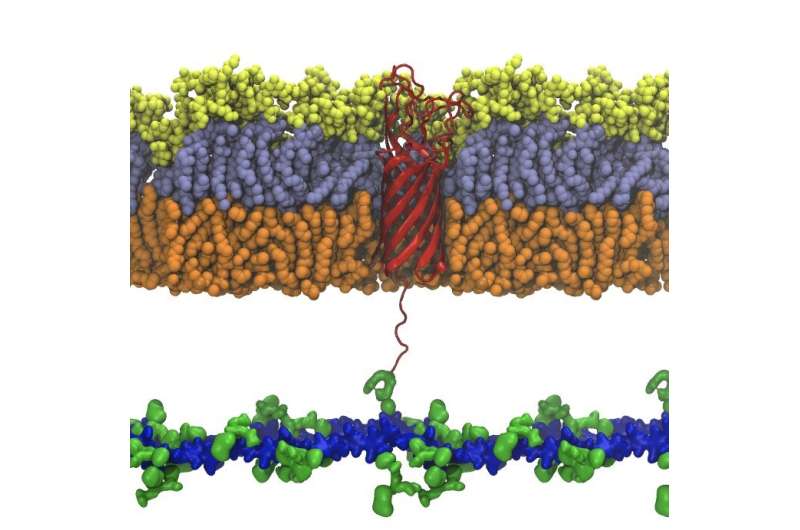Researchers learn how bacteria protect their protective outer membranes

An international research team discovered a mechanism that disease-causing bacteria use to anchor their protective outer membranes. Their findings could inform strategies to disrupt a microbe's cell structure, ultimately helping to combat pathogens that affect humans and plants.
Scientists from Oak Ridge National Laboratory used high-performance computing to create protein models that helped reveal how the outer membrane is tethered to the cell membrane in certain bacteria. These Gram-negative bacteria sandwich their cell walls between an outer and inner membrane, and the layers act as a shield that allows them to persist under harsh conditions.
ORNL's models informed further simulations and experiments by collaborators who observed these unusual linkages.
"Modeling and simulating membrane proteins help us understand complex cell structures," ORNL's Jerry Parks said. "These approaches are particularly important when relatively little is known about an organism, because it is challenging to study in the lab."
More information: Kelsi M. Sandoz et al. β-Barrel proteins tether the outer membrane in many Gram-negative bacteria, Nature Microbiology (2020). DOI: 10.1038/s41564-020-00798-4
Journal information: Nature Microbiology
Provided by Oak Ridge National Laboratory















